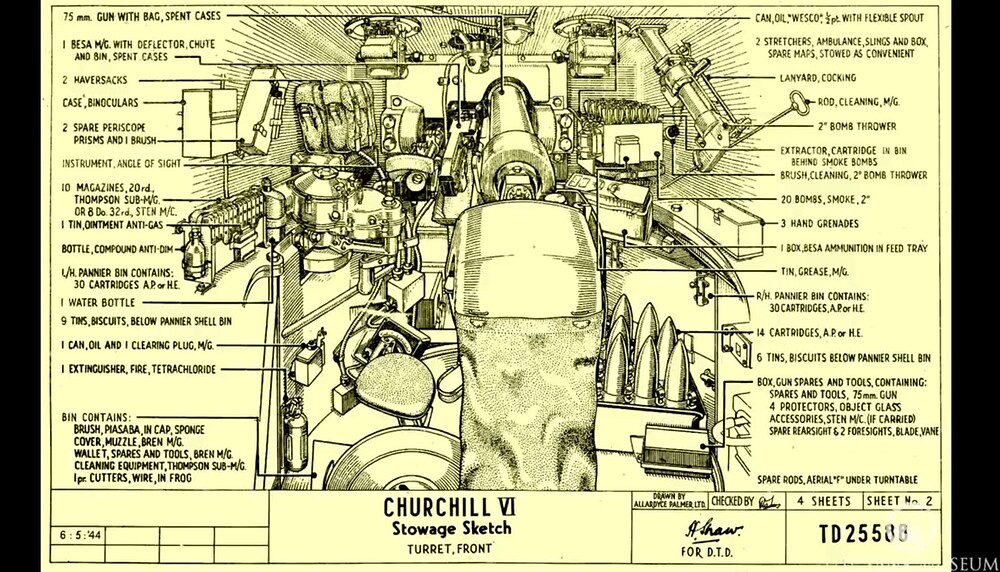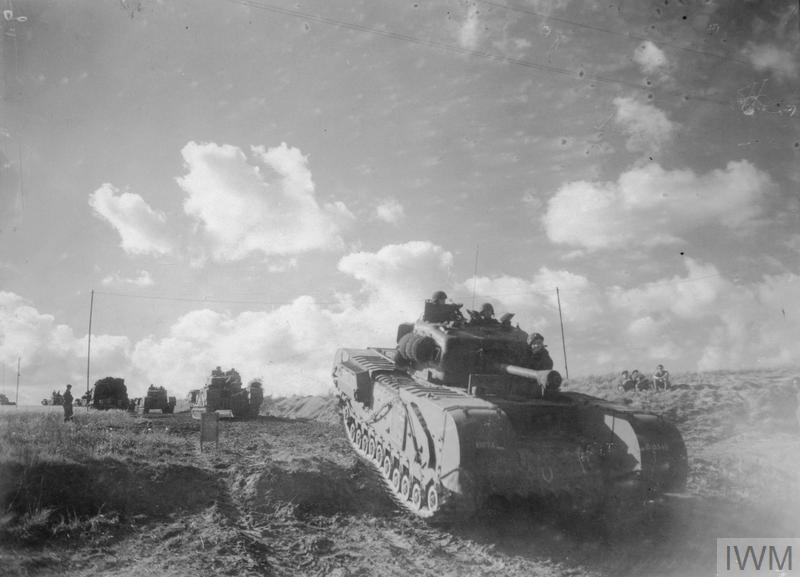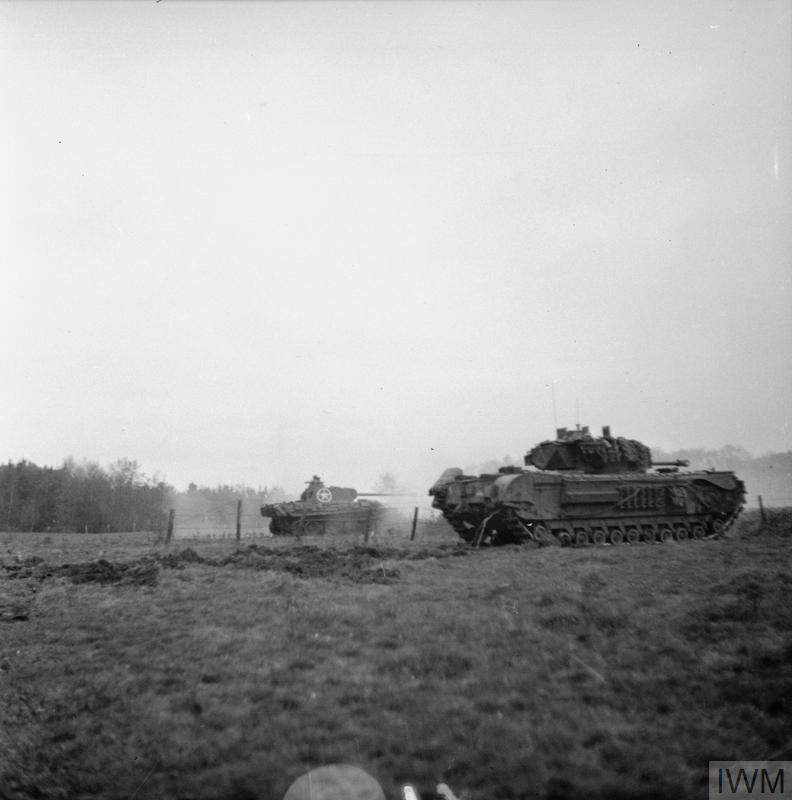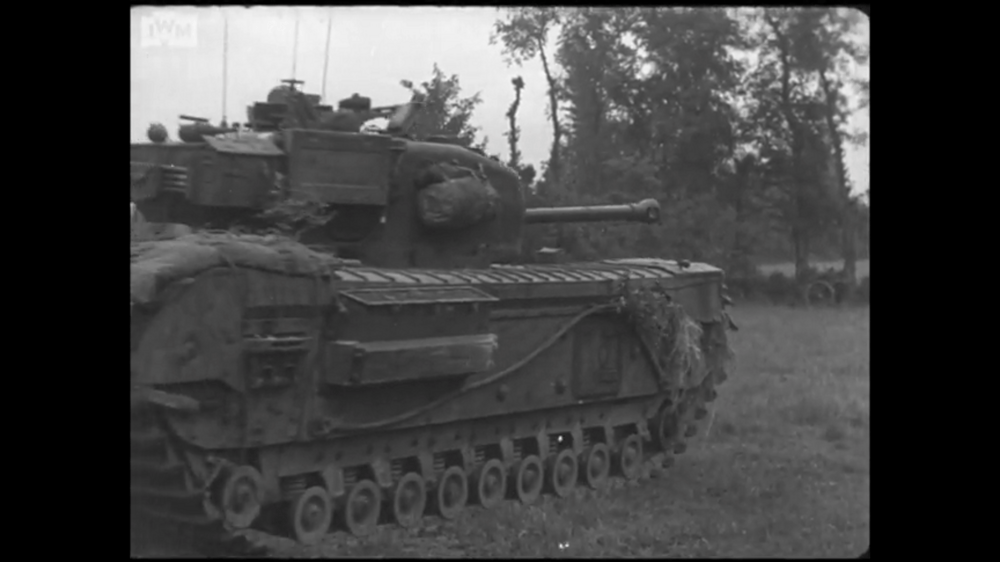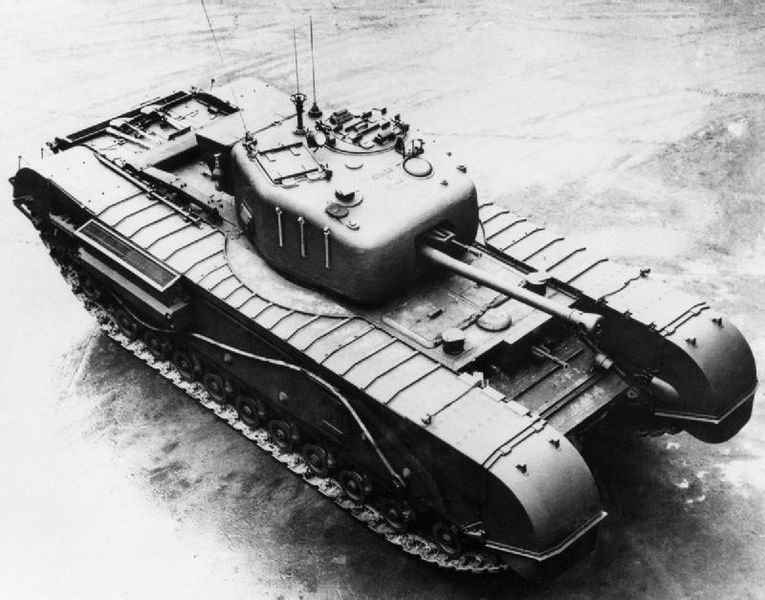- Yes
- No
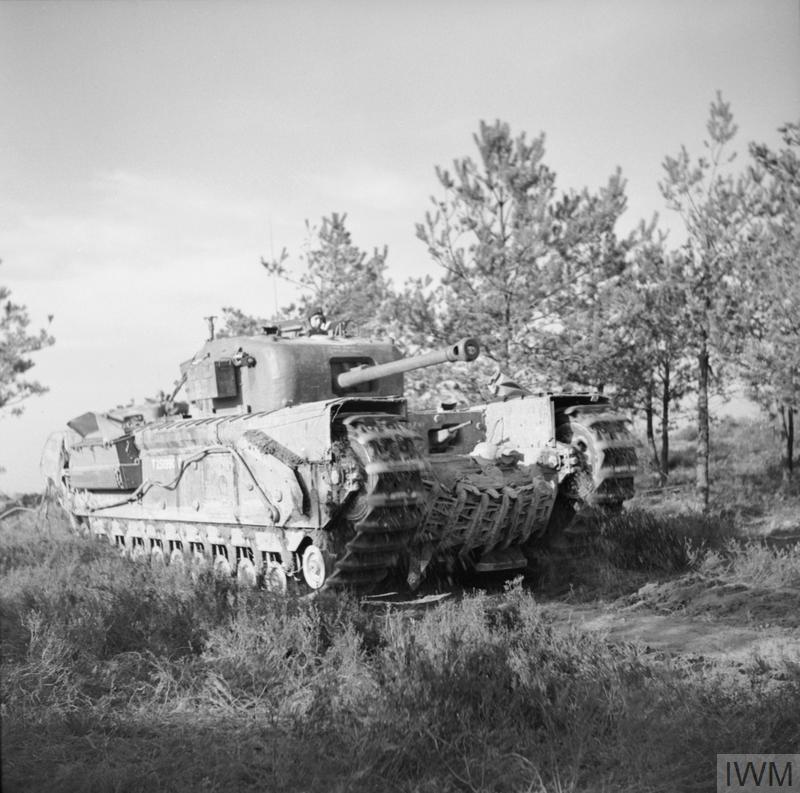
Churchill tank of 9th Royal Tank Regiment, 31st Tank Brigade during the advance towards Goch, 19 February 1945. - IWM (B 14728)
History
At the start of 1943 it was expected that Vauxhall would cease production of the Churchill and switch over to producing the Cromwell. However, they estimated that transitioning to Cromwell production wouldn’t be completed before the end of the year and so suggested that an order be placed for another 500 Churchills so that their facilities could keep working during the changeover period.
The order was placed by the War Office with the caveat that as many as possible of the 500 should be equipped with the new ROQF 75mm Mk. V gun in a geared-elevation mounting. These tanks were designated as the Mk.VI and, at the same time, a number of Mk. IIIs and Mk. IVs were rearmed to also have the 75mm but they retained their free elevation. These were known as the Mk. III* and Mk. IV (75mm) respectively.
Some Mk. VIs received the 75mm Mk. VA which is distinguishable by the counterweight fitted behind the muzzle brake.
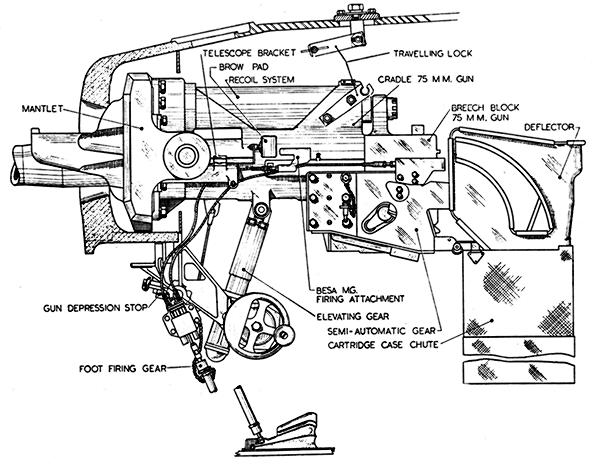
After having proved itself in North Africa, another order for a further 1000 Churchills was placed and so Vauxhall never did switch over to Cromwell production (two prototypes were built with some of their design elements going into the Churchill VII) and instead continued building Churchills until the end of the war.
By the time the Mk.VIs production started in late November 1943, the Mk.VIIs design was nearing completion and so many components as well as the stowage arrangements were incorporated into the Mk.VI, forming a link between the Mk. IVs and the upcoming Mk. VII. These included: an infantry telephone in a box on the back of the hull, a crowbar on the offside track guard, a single 4-gallon water can replacing the pair of 2-gallon ones, and the usage of armoured bins for the ammunition stowage as well as their placement.
Between 200-250 Mk. VIs were produced and they saw service in the North-West European Campaign from D-Day to VE-Day with 6th Guards Tank Brigade, 31st Tank Brigade, and 34th Tank (later Armoured) Brigade. Some of them may have also gone to 79th Armoured Division as support and Command tanks for their Crocodiles and AVREs.
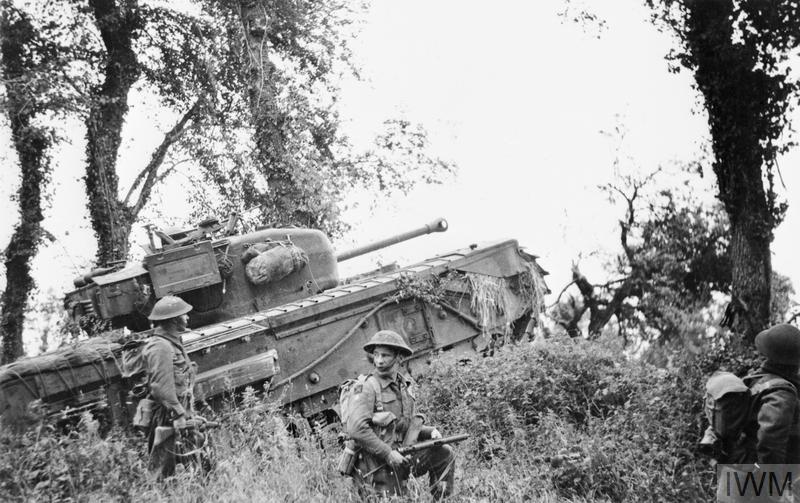
A Churchill tank of 7th Royal Tank Regiment, 31st Tank Brigade, supporting infantry of 8th Royal Scots during Operation ‘Epsom’, 28 June 1944. - IWM (B 6124)
Universal Turret
When it was found that the OQF 95mm Tank Howitzer Mk. I would not fit into either the Mk. IIIs welded or Mk. IVs cast turrets, the decision was made to create a new casting, based upon the Mk. IVs Type C turret, which was capable of mounting either the 6pdr, 75mm, or 95mm. This was known as the Universal Turret and was used for Mk. IVs with the 6pdr, Mk. Vs with the 95mm howitzer, and Mk. VIs with the 75mm.
The main differences are that the corner of the mantlet aperture above the BESA was squared off, the ventilator was moved from above the gunner’s position to above the gun breach, and a larger maintenance plate was fitted to the back of the turret to allow the fitting and removal of the 95mm as seen on this Mk. V.
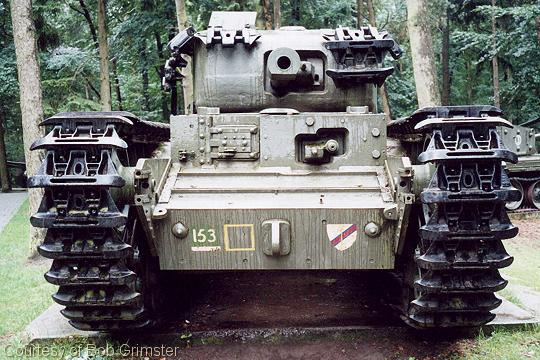
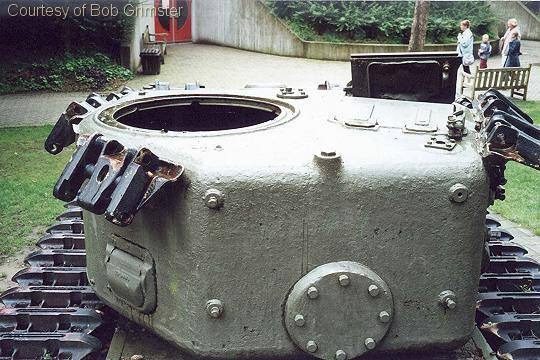
The front and left side had a cast-in collar to protect the turret ring but, due to space constraints, the right side instead had a U-shaped metal plate bolted on to protect the turret ring. This feature isn’t exclusive to the Universal (can be seen on the NA75 in-game). The rear underside of the turret was also lifted up, creating a larger gap between the rear and the hull roof/engine deck compared to previous castings.
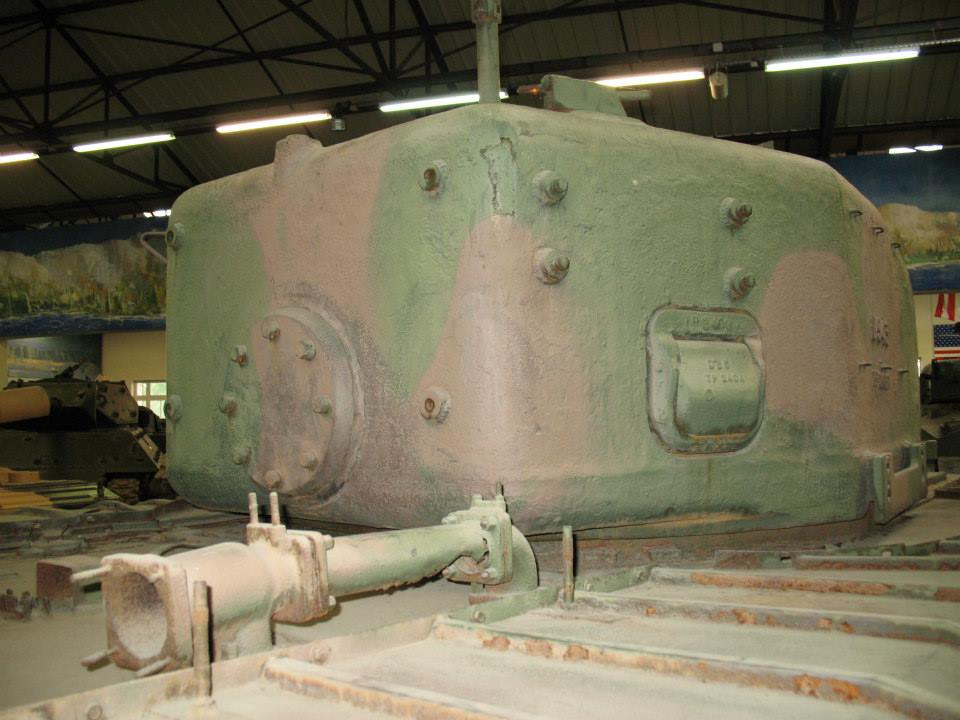

The turret roof was also revised with the use of later patterns of turret hatches with strengthening supports, three aerials for the radios at the back of the turret (doesn’t always seem to be the case that all three aerials are fitted), and a vane sight for the commander. All features later found on the Mk. VII.
A number of Mk. VIs also had their cupola replaced with the later ARV (All-Round Vision) cupola but this was an easy modification and is not indicative of a Mk. VI.
All tanks with the Universal Turret had a 6-digit War Department number being either T17xxxx or T25xxxx i.e. T251706.
Spot the difference - Mk. IV (75mm) or Mk. VI?
What is probably quite apparent by now is that differentiating between these two externally is very difficult, especially as a lot of period photographs show tanks with spare track, additional stowage, infantry, or just general bits and bobs covering the turret. As such I’ve done my best to find pictures of Mk. VIs but some may be Mk. IV (75mm).
The best way is looking at the previously mentioned squared off mantlet aperture or differently shaped sides and rear of the turret. If these aren’t visible then matching features like the aerials, vane sight, and W.D. number can help.
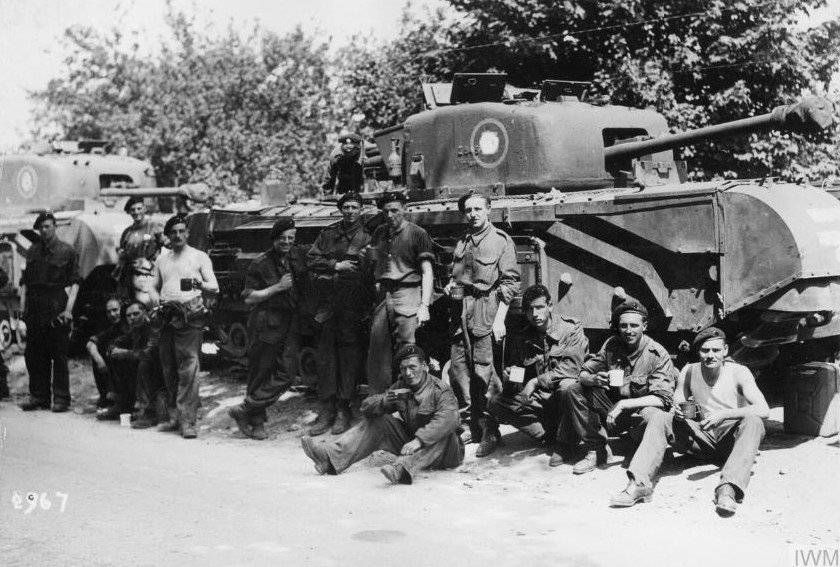
Churchill tanks and crews of No. 3 Squadron HQ, 4th Battalion Coldstream Guards, 6th Guards Tank Brigade in the UK, awaiting embarkation to France, 1944. The censor has obliterated unit and tactical markings. - IWM (HU 104160)
A tell-tale sign of it NOT being a Mk. VI is if the ventilator on the turret roof is mounted anywhere other than above the gun breach.
For example, this is Bovington’s Churchill, a Mk. IV (75mm) as evidenced by the offset ventilator, mantlet aperture, and rear turret shape but this one has, at some point, been modified to bring it closer to the later specs.
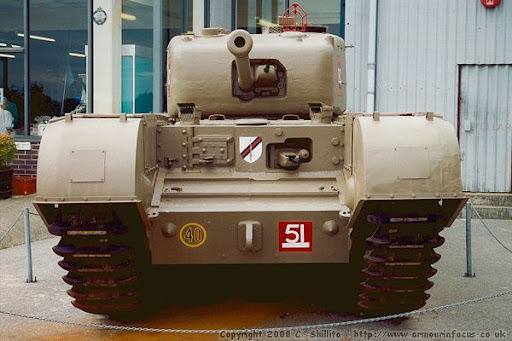
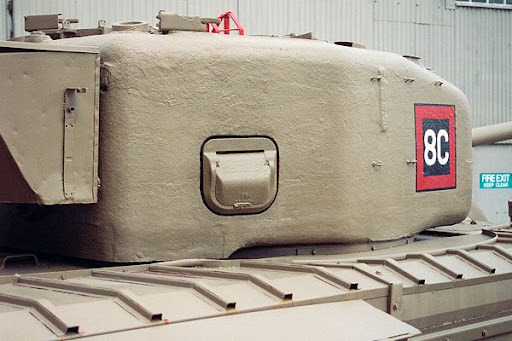
External Mantlet Shield
From what I’ve been told/able to find, the external mantlet was an experimental add-on created by 34th Tank/Armoured Brigade. The purpose of this add-on was twofold:
- Prevent the shadow caused by the Churchill’s internal mantlet and gun embrasure which was considered to be a potential aiming point for the enemy
- Prevent splash from hits to the internal mantlet from making their way into the turret and possibly wounding the turret crew
These were attached to the tanks by welding the plate to the co-axial BESA’s mounting/shield.
It looks like they exclusively did it to their Mk. VIs (possibly the geared elevation was less affected by the shift in balance compared to the free elevation system on many older Churchills) but I’m unsure as to whether it was seen as successful or worth the effort. It doesn’t appear to have had widespread adoption but there aren’t too many photos of them around.
Despite this, I think it would be a good add-on armour modification to add a little extra protection and further visually distinguish it from the Mk. IV (75mm) and NA75. Based on the available pictures, I believe it would be around 20mm thick.

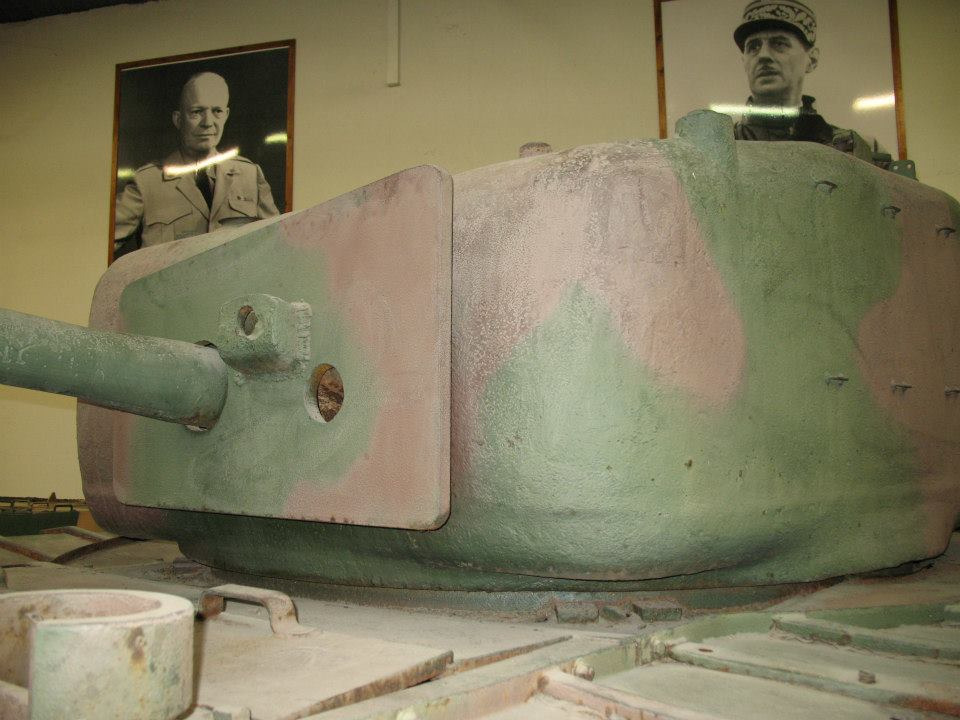
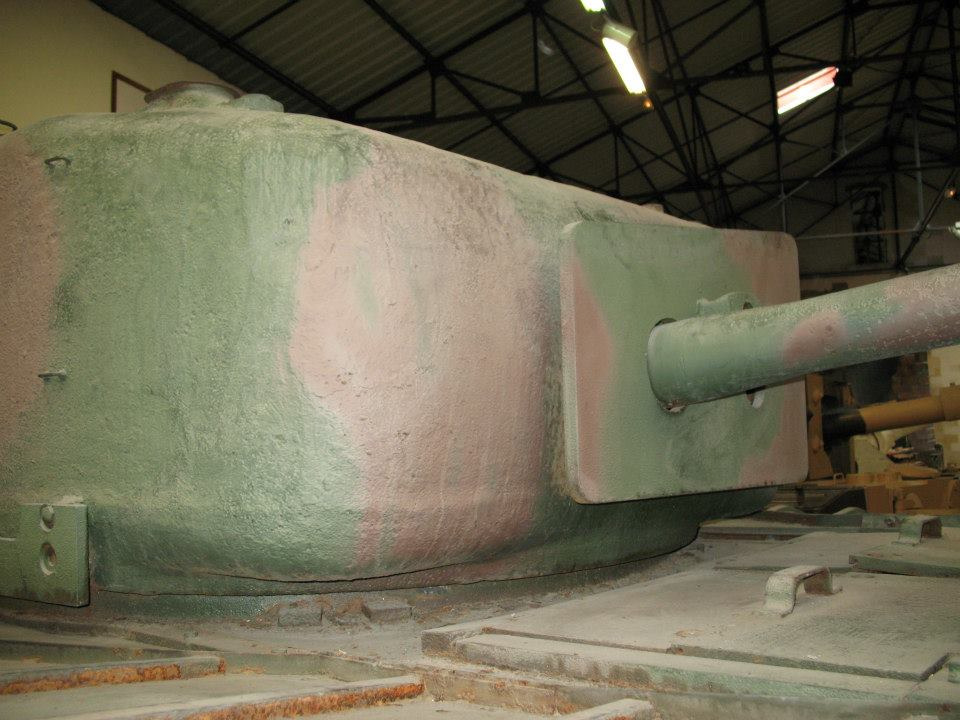
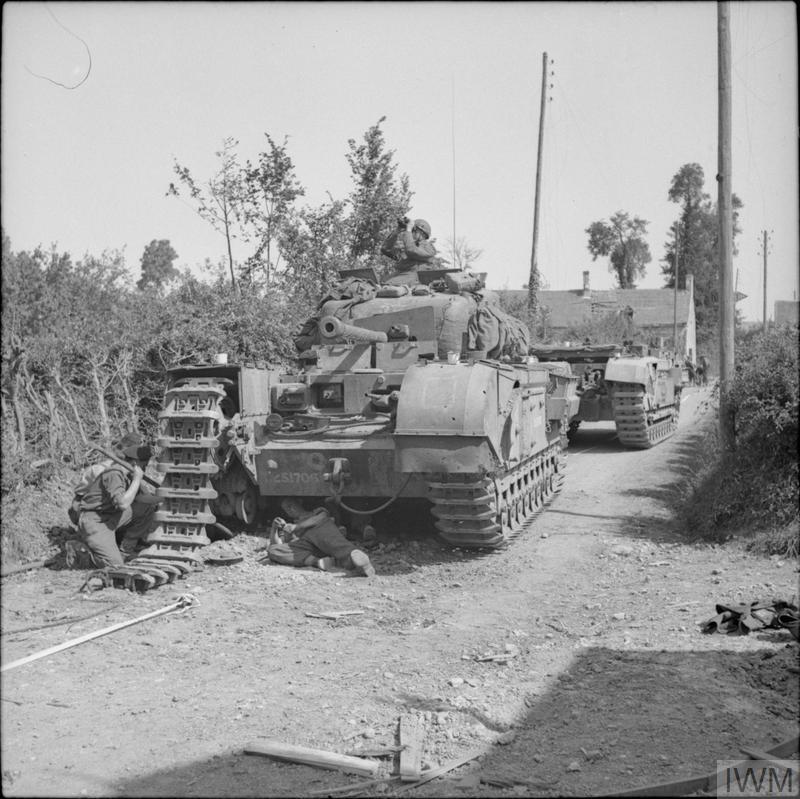
Track repairs for a Churchill tank in the Villers Bocage area, 4 August 1944. A Churchill ARV can be seen in the background. - IWM (B 8578)
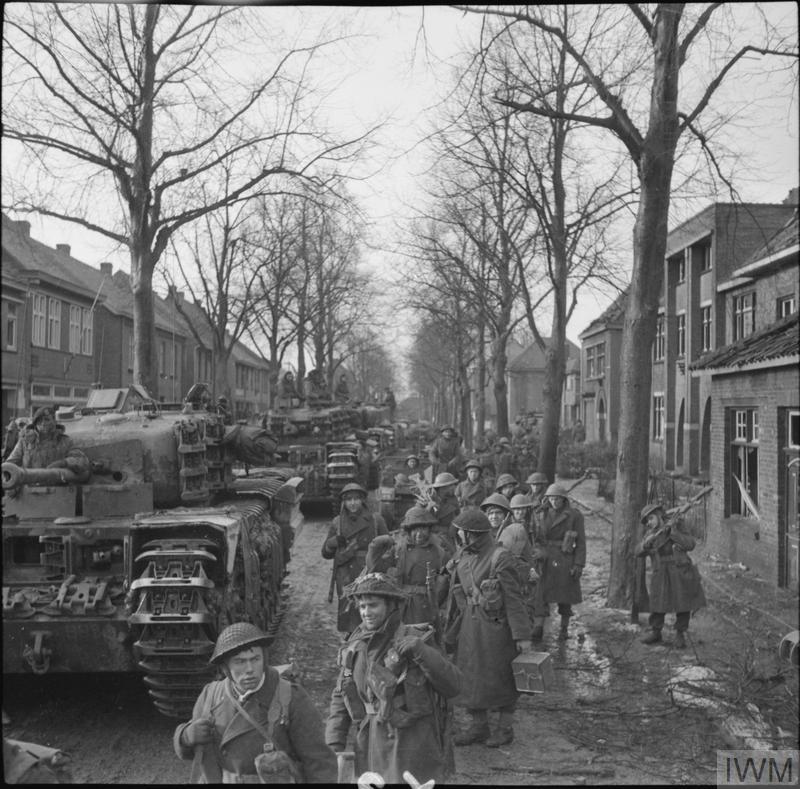
Churchill tanks and troops of the 9th Durham Light Infantry in Schilberg, 20 January 1945. - IWM (B 13933)

Churchill tanks of 34th Tank Brigade cross a temporary bridge in Roosendaal, 30 October 1944. - IWM (B 11490)
In-game
I think the Churchill Mk. VI would fit in best at 3.7 alongside the similar KV-1 (L-11) and ARL-44 (ACL-1). The reason I haven’t put it with the NA75 is that the NA75 has a slightly better armour profile on the turret front with the added on Sherman mantlet and has HE filler in its M61 APCBC giving it better post-pen effectiveness.
Specifications
Crew - 5
Weight - 39t
Length - 24’-1”
Width - 9’-5”
Height - 8’-2”
Engine - Bedford Twin-Six 12-cylinder (350hp)
Max speed - 17.4mph
Armament
ROQF 75mm Mk. V
2xBESA 7.92mm MG
Max elevation/depression - +20/-12.5
Ammunition
84 shells
9,450 7.92mm BESA rounds
Figures taken from War Thunder Wiki
Armor penetration (mm) at a distance:
10m / 100m / 500m / 1000m / 1500m / 2000m
M72 - AP: 91 / 88 / 78 / 67 / 57 / 49
M61 - APCBC: 103 / 100 / 89 / 77 / 66 / 57
M48 - HE
M89 - Smoke
Armour
Lower Hull Nose - 76.2mm
Upper Hull Nose - 38mm
Hull Front - 89mm
Hull Sides Upper - 50.8mm
Hull Sides Lower - 63.5mm
Hull Side Doors - 76.2mm
Hull Rear Upper - 50.8mm
Hull Rear Lower - 25.4mm
Hull Roof - 19.05mm
Engine Deck - 15.88mm
Turret Front - 89mm
Turret Sides - 76.2mm
Turret Rear - 76.2mm
Turret Roof - 30mm
(Variable due to casting)
Images
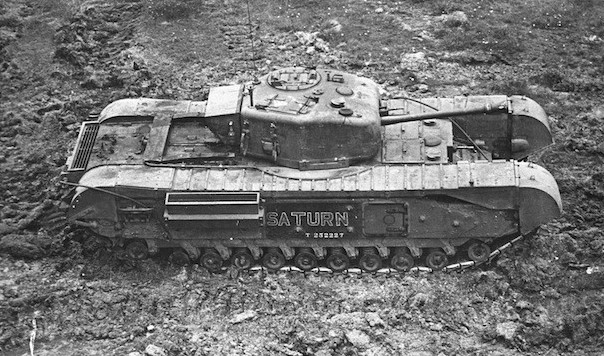
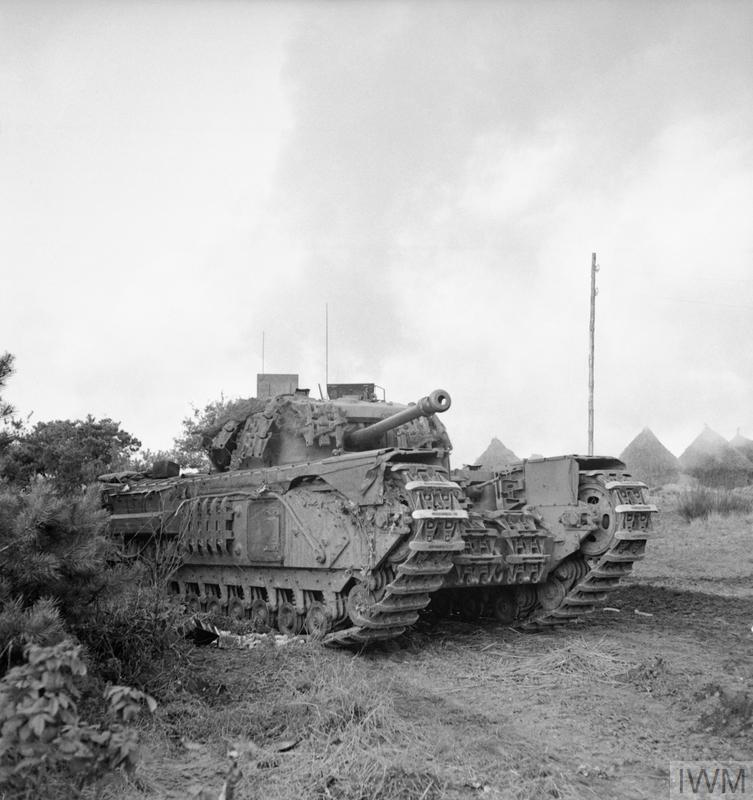
Churchill tank of 4th Grenadier Guards near Moostdijk, 4 November 1944. - IWM (B 11691)
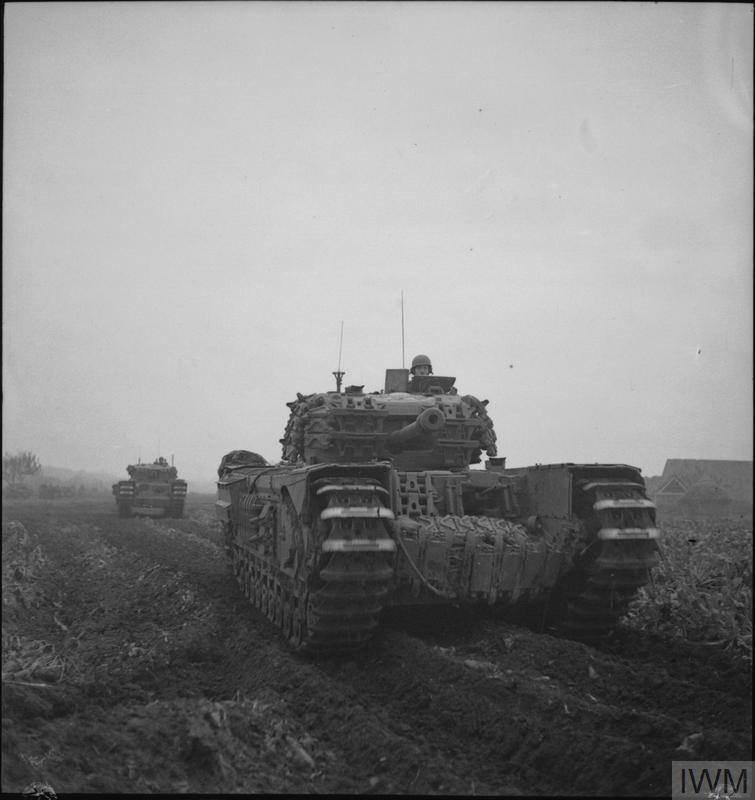
Churchill tanks of the 4th Grenadier Guards advance towards Venraij in Holland, 17 October 1944 - IWM (BU 1210)
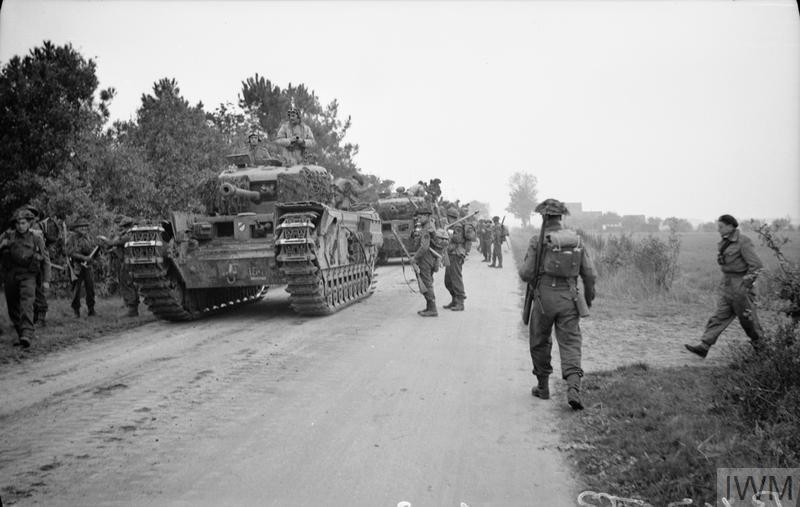
Infantry of 2nd Glasgow Highlanders, 15th (Scottish) Division, with Churchill tanks of 6th Guards Tank Brigade, near Moergestel, 26 October 1944. - IWM (B 11358)
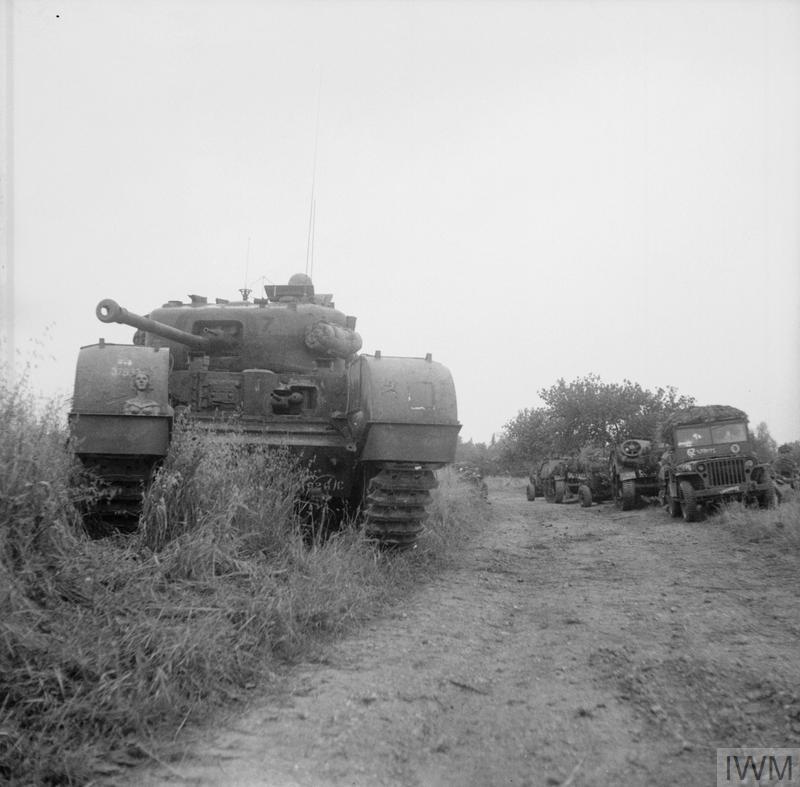
A Churchill tank of 7th Royal Tank Regiment, 31st Tank Brigade, with jeeps and carriers during Operation ‘Epsom’, 26 June 1944. - IWM (B 6002)
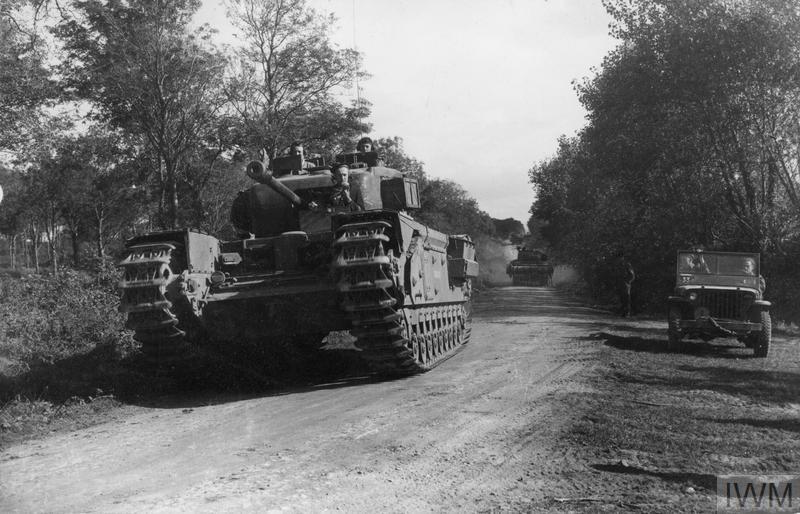
A Churchill tank leads a troop of Sherman flail tanks of 79th Armoured Division during the assault on Boulogne, September 1944. A French sailor can be seen manning the radio in the Churchill, guiding the vehicles towards their objective. - IWM (HU 104161)
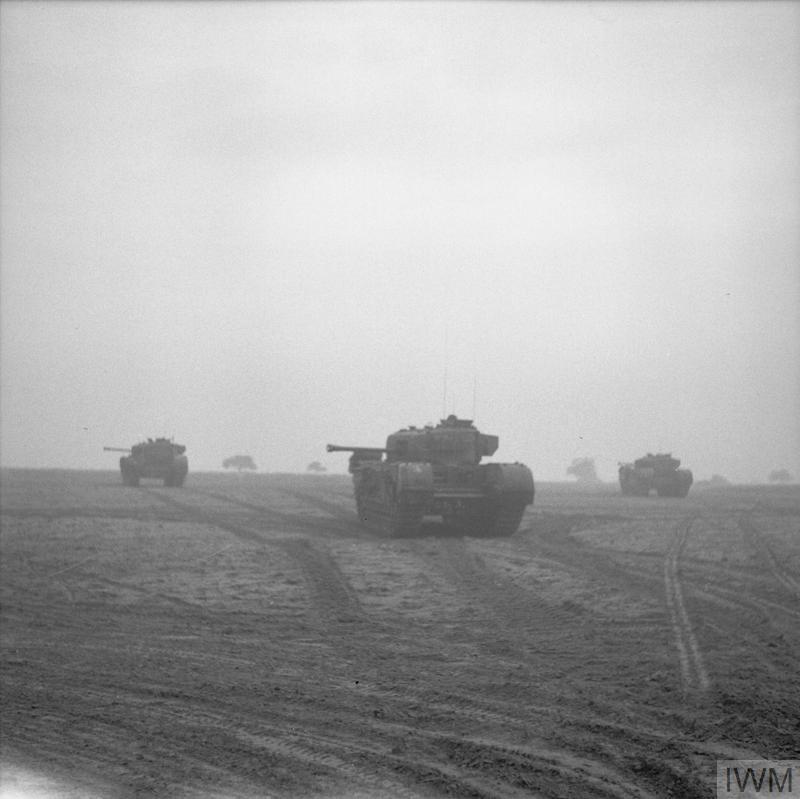
Churchill tanks of 7th Royal Tank Regiment (31st Tank Brigade), move forward during Operation Epsom, Normandy, 25/26 June 1944. - IWM (B 5994)
Sources
The Churchill Tank - C. Shillito, S. Osfield
British Battle Tanks - David Fletcher
Churchill Tank Vehicle History and Specification - David Fletcher
https://www.youtube.com/watch?v=zIBCNOnB6v0 - Tank Chats #119 | Churchill Mark VI and VIII | The Tank Museum
https://www.youtube.com/watch?v=DXH1vAT8VC8 - Evolution of The Churchill Tank | “No Damn Good”? | The Tank Museum
Churchill tank - Wikipedia
